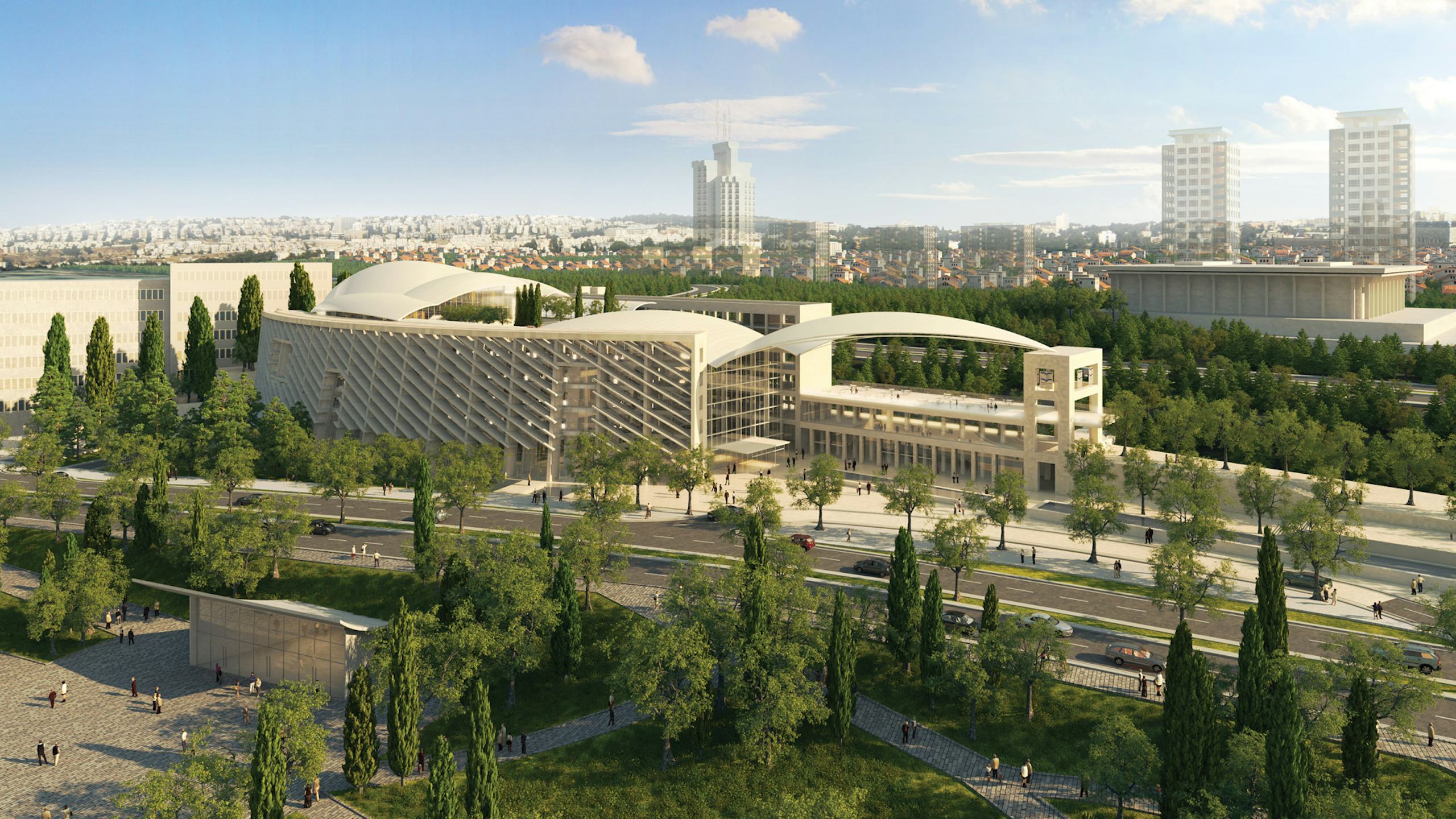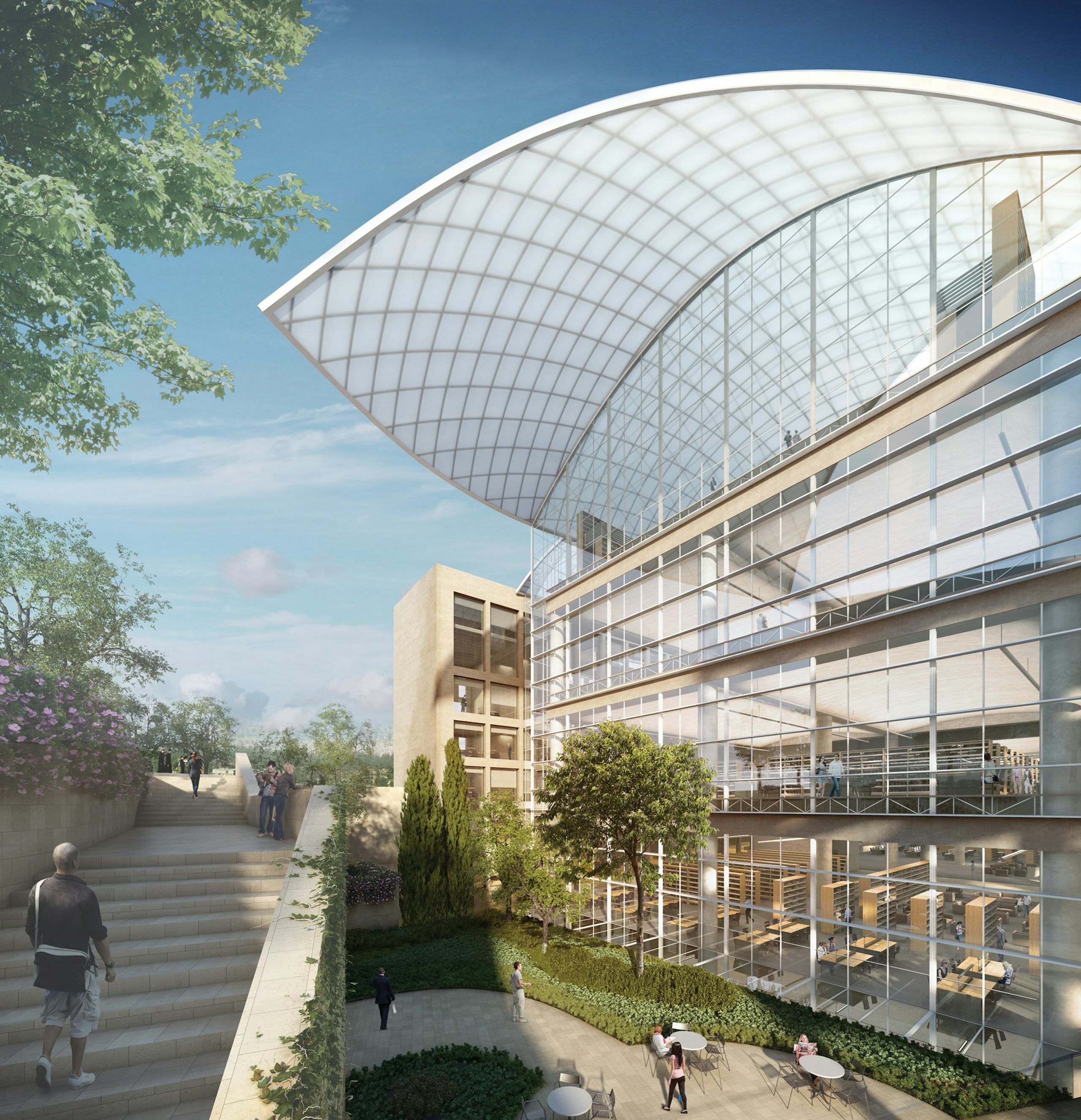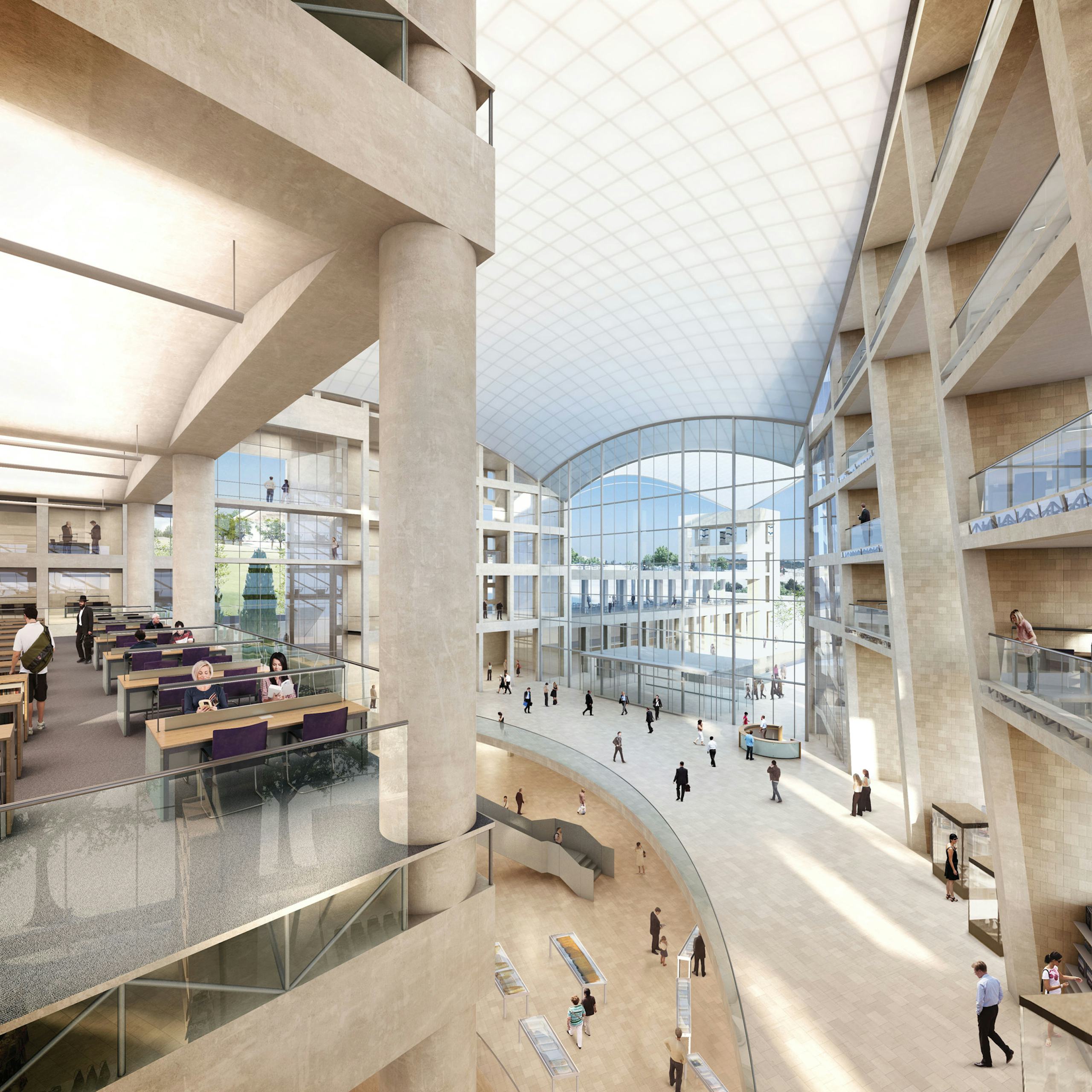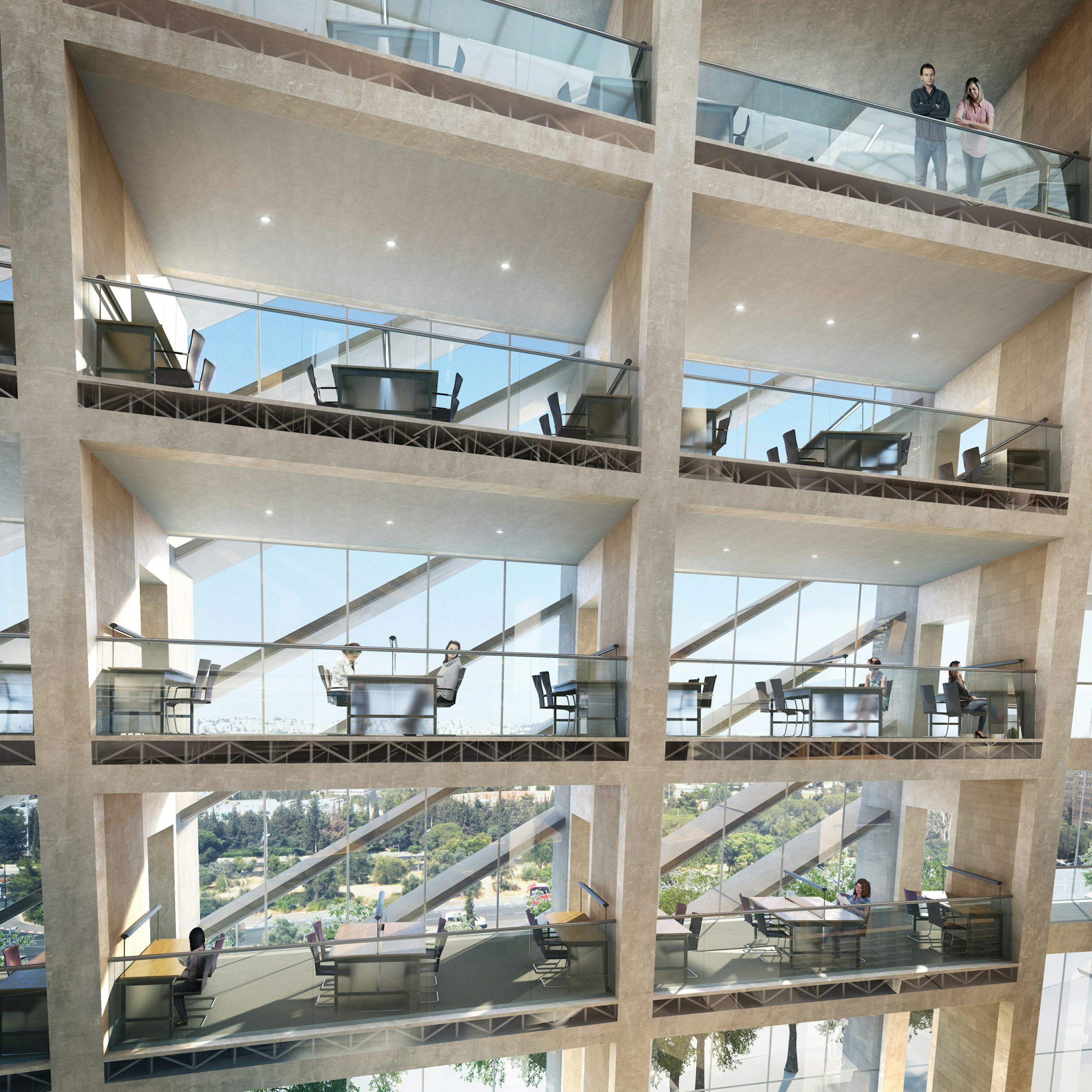National Library of Israel
The site for the National Library of Israel is a prominent part of central Jerusalem, just south of the Knesset, connecting governance, culture, and education in the national precinct. The competition design conceptualizes the library as an extroverted, inviting building, with the library’s operations and workings open to public view and interaction. Part of the public realm, the main collection features fast-stacks in the center of the library, which is visible from all directions. The collection is housed within a 20 meter tall volume, with reading rooms above. This location creates an efficient flow of materials and, more significantly, makes the national cultural storehouse a major element of the library experience. A visitor’s loop—incorporating permanent and temporary exhibits, the auditorium, seminar rooms, and operational areas—provides glimpses of conservation, restoration, archives, and other library work without disturbing their operations.
Three floors of reading rooms at the library’s center offer privacy within community, and individual carrels at the perimeter offer views overlooking the city. A fourth grand public reading room is located on the top floor and opens to a reading garden.
The building structure and facades design draw on local traditions of precast concrete inlaid with Jerusalem stone. The library’s shapely roof—a thin shell steel structure and white glass —filters daylight and acts as an acoustic absorber. The translucent roof, extensive glazing, deep light shelves, and open interior spaces allow filtered daylight to permeate every part of the building. Extensive courtyards, gardens, and terraces, which are synonymous with the cultural heritage of the city, add to the importance of the library as a setting for public life.



